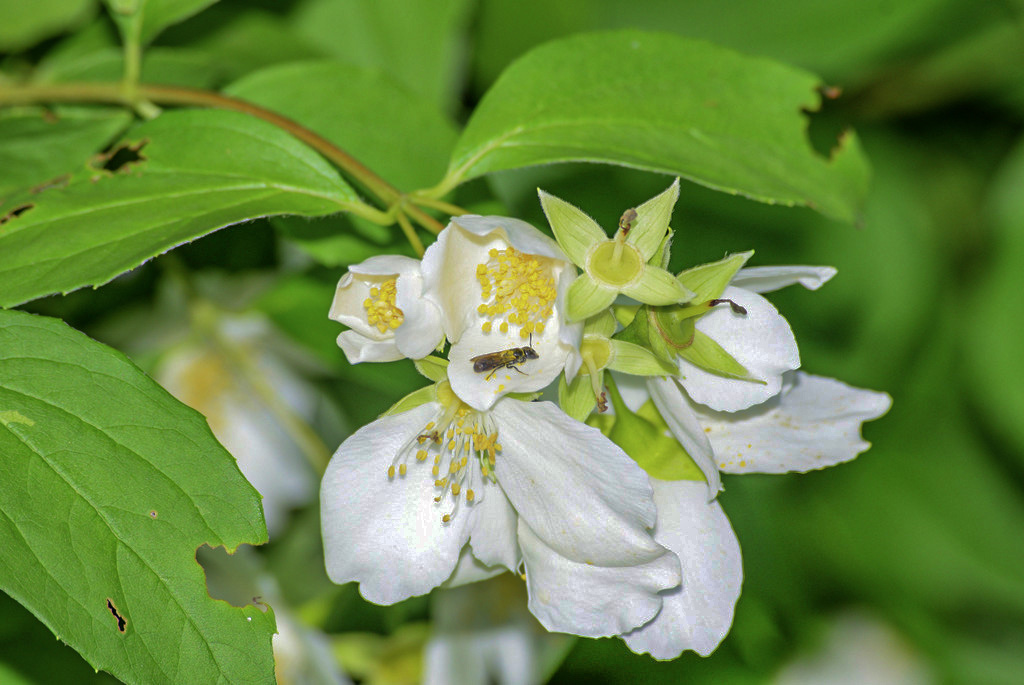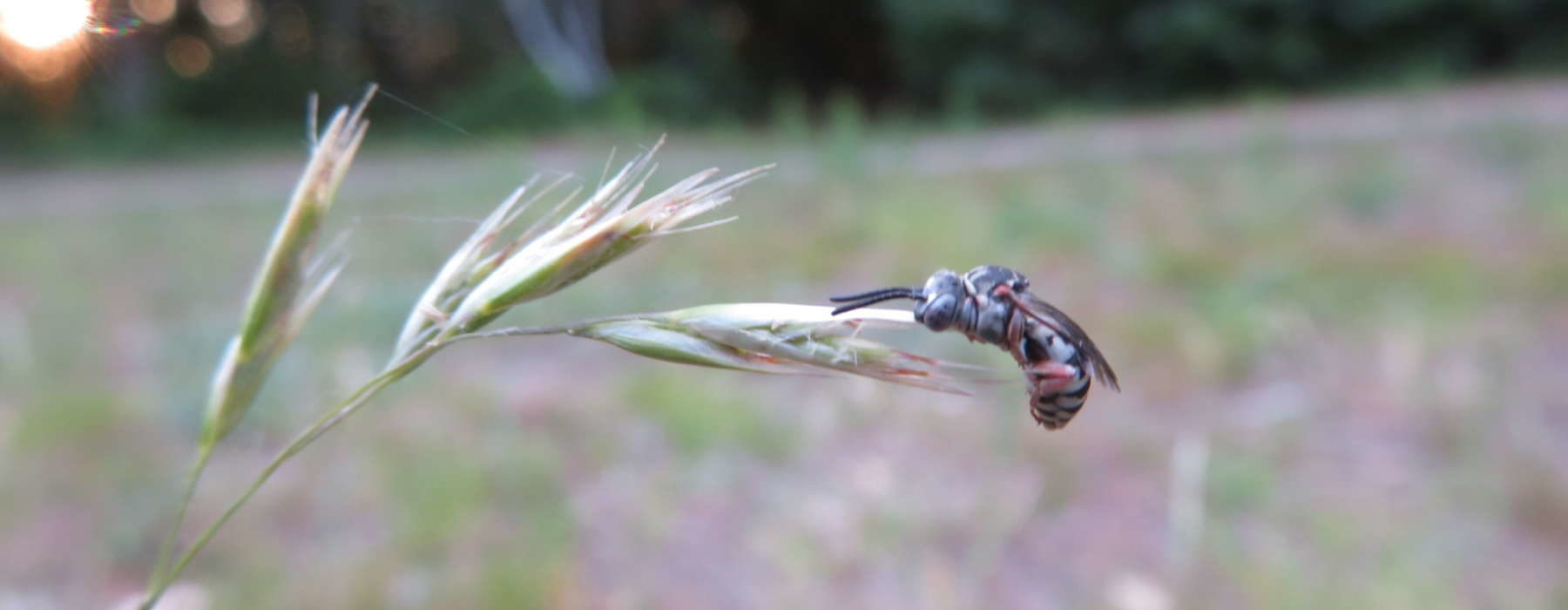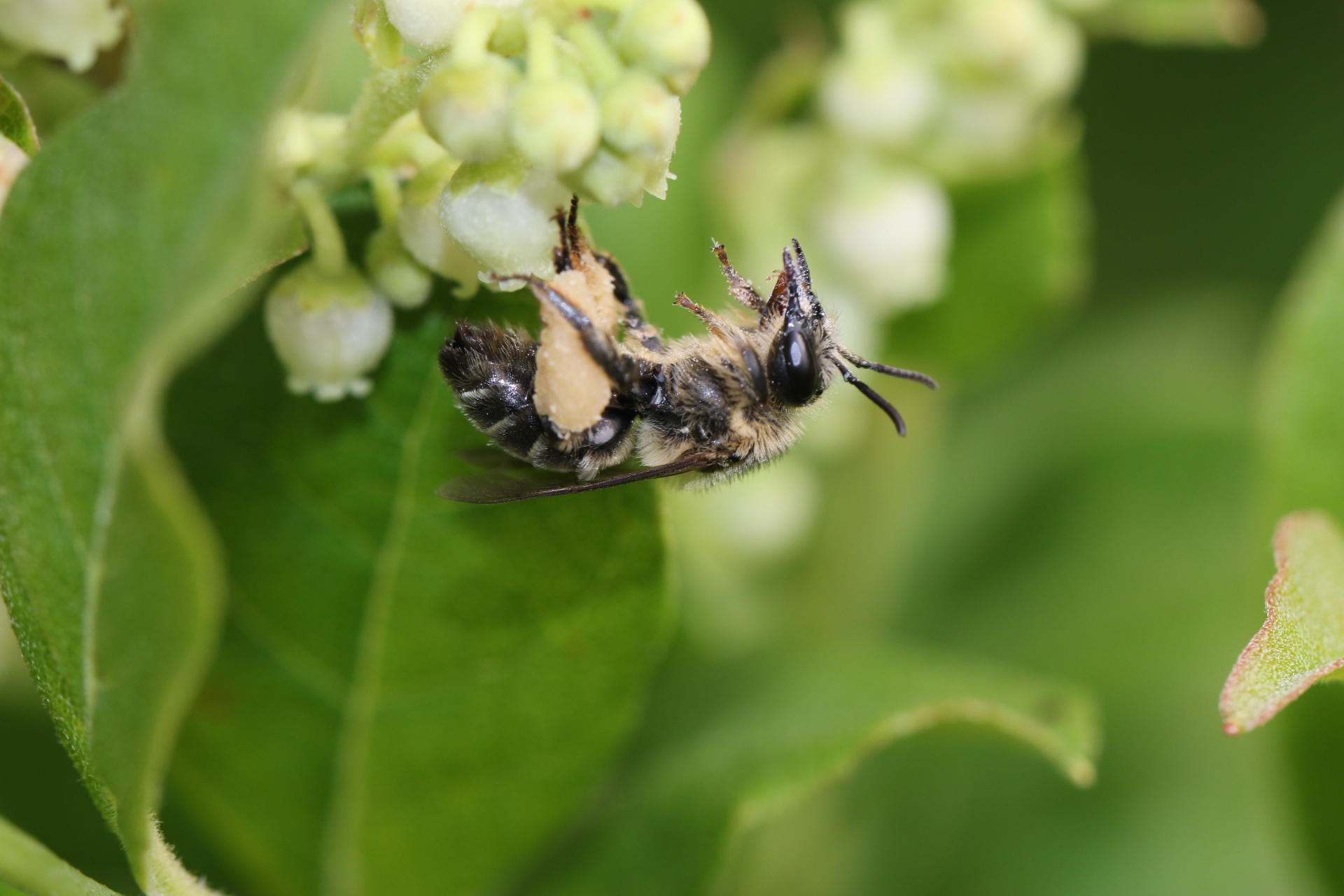The Vermont Wild Bee Survey has amassed over 50,000 bee records and discovered over 50 new bee species for the state in just two years. It takes an entire village to discover bees–volunteer naturalists, field biologists, and bee identification experts. Three new bee discoveries in June highlights the teamwork.
On June 17th Jacob Penner, a botanist by training, posted images on the Vermont Atlas of Life on iNaturalist of tiny bees he found resting on Poverty Grass (Danthonia spicata) in Airport Park in Colchester. He of course knew the grass species well, but the bee was a mystery to him.
Spencer Hardy, lead biologist for the bee survey, always keeps a watchful eye on iNaturalist reports when he isn’t in the field himself. The next day he spotted this one, immediately recognized the genus and suspected that it was perhaps a rare species– Epeolus minimus, the Least Cellophane-cuckoo Bee. He alerted two bee identification experts to have a look.
Dr. Thomas Onuferko, a research associate at the Canadian Museum of Nature confirmed Spencer’s suspicion a day later. “Yes, that is indeed Epeolus minimus (a female).”
A few days later and from the other side of the globe, world bee expert Dr. John Ascher, an Assistant Professor at the National University of Singapore and Research Associate at the Lee Kong Chian Natural History Museum and the American Museum of Natural History, also concurred. He noted that this is the “first New England record and also unknown in New York, Pennsylvania, Ohio and states southward, so a first for a rather broad region.”
The Least Cellophane-cuckoo Bee is a cleptoparasitic species associated with Kincaid’s Cellophane Bee (Colletes kincaidii) that is primarily found in the western US and Canada, but sneaks east along the Great Lakes, and evidently into northwestern Vermont too. We have not verified this species yet, but we have some samples that are being examined by experts from that location.

VT’s first Mock Orange Scissor Bee (Chelostoma philadelphi) found and photographed by Bernie Paquette.
Naturalist Bernie Paquette keeps a keen eye on the wild things in his area. On June 23rd near Jericho Center he snapped a photo of a tiny bee on a Mock Orange (Philadelphus sp.) flower and shared it with the Vermont Atlas of Life on iNaturalist. Spencer took a close look at it a few days later and wrote Bernie. “Cool! What plant is this? If it is Mock Orange, it very well might be a new species for the state. Based off what I can see of the bee and the flower, I am tentatively calling this the Philadelphus specialist, the Mock-orange Scissor Bee (Chelostoma philadelphi).” Bernie wrote back and noted it was indeed a Mock Orange bush. Twenty-four hours later, Dr. Ascher confirmed this one too–species number 330 for the Vermont checklist of bees.
Just a few days ago, Spencer made another new discovery from the opposite end of the state in Bennington County. For over two years Spencer has been on the hunt for obscure bee species in the genus Melitta, also known as Blunt-horned Bees. There are three species in the genus in the east, all of which are specialists whose host plants occur in Vermont. With the help of the Vermont Natural Heritage Program, Spencer tracked down populations of the host plants and was finally able to find one of these bees – Melitta melittoides. A day later, Dr Ascher logged in and confirmed Spencer’s discovery, making it not only a new species, but a new genus for Vermont too!
To follow along with the project findings in real time, join the Vermont Wild Bee Survey project on iNaturalist. If you want to find a new state record yourself, check out the Most Wanted page on our online atlas and explore all the bees of Vermont. Maybe you could help us discover a new bees too!








